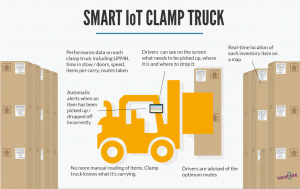What are the most common use cases for IoT and sensors in manufacturing businesses?
The most common use cases for sensors and Internet of Things (IoT) technology in manufacturing are in asset and facility monitoring. Sensors can send data from critical assets and building systems to a centralized computer system 24/7. Having that information at your fingertips means fewer emergencies, reduced downtime and increased productivity.
Prioritize Sensor Usage
Hundreds of IoT sensors are available today with more being developed all the time. Costs are coming down, which means implementing sensors is a smarter business decision than ever.
However, it’s important not to go overboard. Manufacturing facilities manager must identify critical assets that are top priorities for manufacturing sensor technology. Start with those assets that are most vital to keep your production lines up and running. Look for sensors that can notify you of problems that can result in downtime or significant damage.
For example, a vibration sensor may alert you when an older machine requires lubrication. Performing this preventive maintenance task before it breaks down can keep your whole line moving.
In some manufacturing companies, you may need to keep tight temperature control for sensitive equipment or storage of things like food productions. Temperature sensors can ensure that those spaces stay within acceptable ranges before inventory or assets are damaged, spoiled or lost.
Sensors and Building Management
Overall building systems can benefit from IoT and sensor technology as well. For example, HVAC systems and utilities such as water systems can easily be monitored using sensors. This technology sends around-the-clock, real-time information to a centralized system, allow maintenance managers to shift from reactive maintenance to a more preventive maintenance mindset.
Sensors and IoT can monitor energy usage, water usage and flooding problems. They can also track things like mileage on equipment such as forklifts used in manufacturing facilities.

Want to keep reading?
IoT Manufacturing: How IoT in Manufacturing Will Benefit Future Workplaces
What are the best metrics and KPIs for manufacturing companies?
How IoT Works: The Four Factors That Make IoT Possible
4,000+ COMPANIES RELY ON ASSET OPERATIONS MANAGEMENT
Leading the Way to a Better Future for Maintenance and Reliability
Your asset and equipment data doesn't belong in a silo. UpKeep makes it simple to see where everything stands, all in one place. That means less guesswork and more time to focus on what matters.


![[Review Badge] GetApp CMMS 2022 (Dark)](https://www.datocms-assets.com/38028/1673900459-get-app-logo-dark.png?auto=compress&fm=webp&w=347)
![[Review Badge] Gartner Peer Insights (Dark)](https://www.datocms-assets.com/38028/1673900494-gartner-logo-dark.png?auto=compress&fm=webp&w=336)
